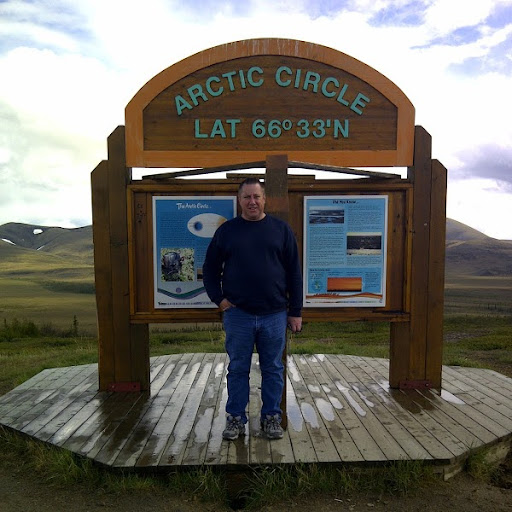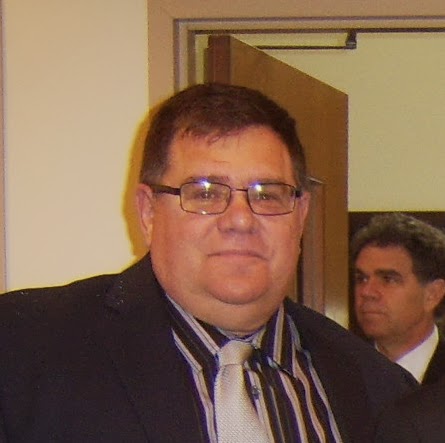David Monroe Macpherson
age ~71
from Holland, MI
- Also known as:
-
- David M Macpherson
- Davi B Macpherson
- Davi S Macpherson
- David Mcphereson
- Dave Mcpherson
- Macpherson Davi
David Macpherson Phones & Addresses
- Holland, MI
- 1370 Filmore St, Salt Lake City, UT 84105 • 8015824130
- 11809 Reeves Ln, Riverton, UT 84065 • 8014461275
- Lansing, MI
- Dewitt, MI
- East Lansing, MI
Specialities
Buyer's Agent • Listing Agent
Resumes

David Macpherson
view sourceLocation:
Salt Lake City, UT
Industry:
Consumer Electronics
Work:
Studio Electric
Owner
Owner

David Macpherson
view source
David Macpherson
view source
David Macpherson
view source
David Macpherson
view source
Owner, Studio Electric
view sourcePosition:
Owner at Studio Electric
Location:
Greater Salt Lake City Area
Industry:
Consumer Electronics
Work:
Studio Electric
Owner
Owner
Interests:
Design and fabrication of high fidelity audio equipment.
Us Patents
-
Bowling Scoring System With Instant Replay
view source -
US Patent:58429298, Dec 1, 1998
-
Filed:Aug 30, 1996
-
Appl. No.:8/697870
-
Inventors:Erick R. Moody - Grandville MI
William Sias - Muskegon MI
David MacPherson - Muskegon MI
Thomas G. Phee - Muskegon MI -
Assignee:Brunswick Bowling & Billiards Corporation - Muskegon MI
-
International Classification:A63F 922
-
US Classification:473 70
-
Abstract:An instant replay system for a bowling scoring system is disclosed in which a video clip of a bowler's approach and deliver of a bowling ball and a video clip of the bowling ball subsequently entering a pin-fall area are filmed, compressed, and stored in a memory device, such as a hard drive. The instant replay system includes a controller for receiving user requests from a user input terminal of the bowling scoring system and for responding to such user requests by selecting a stored video clip and controlling playback of the selected video clip on a display monitor of the bowling scoring system. In this manner, a user may request that the replay video clip be played in at any selected rate, that the controller freeze the display on a specific video frame, and that the controller fast-forward or rewind the video clip. Further, the user may request the replay of any previously stored video clip by specifying the bowler, game, frame and ball of which the video clip is taken. The instant replay system may be networked to similar systems associated with other lanes of the bowling center and networked to a shared video server.
Isbn (Books And Publications)



Gwartney/Stroup/Sobel/Macpherson's Macroeconomics: Public And Private Choice
view sourceAuthor
David Macpherson
ISBN #
0324320345

Nonlinear Frequency Generation and Conversion: 29-31 January 1996, San Jose, California
view sourceAuthor
David C. MacPherson
ISBN #
0819420743




Name / Title
Company / Classification
Phones & Addresses
RENOVATIONCAPITAL LLC
EVERMAC MANAGEMENT COMPANY, LLC
THE PRO BUSINESS GROUP, LLC
Owner
Macpherson Audio
Events Services · Engineering Services
Events Services · Engineering Services
1370 Filmore St, Salt Lake City, UT 84105
8014500633
8014500633
THE ALPHA CONSULTING GROUP, INC
Myspace
Plaxo

David C. Macpherson
view sourceCorte Madera, CALaw Offices of David C Macpherson

David Macpherson
view sourceTallahassee, FL
Googleplus

David Macpherson

David Macpherson

David Macpherson

David Macpherson

David Macpherson

David Macpherson

David Macpherson

David Macpherson
Classmates

David MacPherson
view sourceSchools:
Hillcrest Middle School Glendale AZ 1990-1992
Community:
Christopher Martin, Christy Oberuc

David MacPherson
view sourceSchools:
Macfarland High School Bordentown NJ 1960-1964

David MacPherson
view sourceSchools:
Antigonish Regional High School Antigonish Swaziland 1975-1979
Community:
Judy Macneil, Betsy Macintyre, Ann Mac Eachern, Shelley Fraser, Joseph Chisholm

David MacPherson
view sourceSchools:
Antigonish Regional High School Antigonish Swaziland 1972-1976
Community:
Judy Macneil, Betsy Macintyre, Ann Mac Eachern, Shelley Fraser, Joseph Chisholm

David MacPherson
view sourceSchools:
Hunters Lane High School Nashville TN 1989-1993
Community:
Katonya Anderson, Jamie Miller

David MacPherson
view sourceSchools:
Macnaughton High School Moncton NB 1976-1980
Community:
Laurie Hebert, Darren Myers, Evan Blakney

David MacPherson
view sourceSchools:
Oak Bay High School Victoria Saudi Arabia 1978-1982
Community:
Susan Wilkinson, Patricia Tidbury, Joyce Reeves

David Macpherson
view sourceSchools:
Mutchmor Public School Ottawa Morocco 1967-1969, Ottawa New School Ottawa Morocco 1969-1970, Crestwood Elementary School Edmonton Azores 1970-1972, Crestwood Middle School Edmonton Azores 1972-1975
Community:
Stu Guthrie, Pat Weidenhamer, Paula Marvin, Laurie Cote

David Macpherson
view source
David MacPherson
view source
David MacPherson
view source
David Macpherson
view source
David Macpherson
view source
David MacPherson
view source
David MacPherson
view source
David Stephen MacPherson
view sourceFlickr
Youtube
News

Wisconsin's 'right to work' vote: A blow to income equality nationwide?
view source- With or without RTW laws, states across the US have seen union membership declining in recent years as a share of total employment, according to tracking by economists Barry Hirsch, David Macpherson, and Wayne Vroman, who wrote an article,Estimates of Union Density by State.
- Date: Mar 06, 2015
- Category: U.S.
- Source: Google

Union vote key, yet a challenge, to defeating Walker
view source- emocratic tilt, a trend fueled in part by the growing public-sector character of the union movement. In 2000, 42% of union members in Wisconsin were in the public sector. By 2011, that had risen to 55%, according to Unionstats, an online database maintained by scholars Barry Hirsch and David Macpherson.
- Date: May 31, 2012
- Source: Google

Most Ohio counties broadly reject Issue 2
view source- Clearly, the anti-Issue 2 forces appealed to more than just union households. Only 13.7 percent of Ohio workers are in unions as of 2010, down from 21.1 percent in 1990 and 37.2 percent in 1970, according to researchers David Macpherson and Barry Hirsch.
- Date: Nov 10, 2011
- Category: U.S.
- Source: Google
Get Report for David Monroe Macpherson from Holland, MI, age ~71














